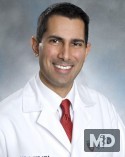WEDNESDAY, Nov. 19, 2014 (HealthDay News) -- Improved coordination between paramedics and hospitals can reduce heart attack deaths nearly fivefold by getting patients quicker treatment, a new study shows.
That's the conclusion of a clinical trial that measured the impact of an American Heart Association initiative designed to improve care for heart attack patients. The findings were to be presented Wednesday at the heart association's annual meeting in Chicago.
The initiative, called Mission: Lifeline and coordinated through Duke University, has reduced the time patients spend in emergency rooms waiting for treatment to reopen blocked arteries, researchers reported.
Advertisement
The initiative, conducted with 484 hospitals and more than 1,200 EMS agencies in 16 cities, resulted in slight reductions in the time it took to get patients from their first contact with a medical professional into an operating room. But those small reductions had enormous benefits: death rates were dramatically reduced by getting people into surgery even 15 minutes sooner than normal.
"It's an exciting endeavor, that even small changes can produce important results," said Dr. Richard Chazal, vice president of the American College of Cardiology and medical director of the Heart and Vascular Institute at Lee Memorial Health System in Fort Myers, Fla.
As part of the program, researchers helped local agencies craft their own plans for coordinating heart attack care among paramedics, hospital staff and cardiologists, according to study co-author Dr. James Jollis, chairman of Mission: Lifeline.
The goal was to reduce to less than 90 minutes the amount of time between when a paramedic or emergency room worker sees a heart attack victim and when the patient receives treatment to reopen the blocked artery causing the heart attack.
Medics are trained to diagnose heart attacks on the fly and then steer patients directly to hospitals with "cath labs," which are special facilities equipped to reopen blocked arteries through cardiac catheterization and then implant stents to keep the arteries open.
"With this protocol, the medics diagnose the problem, they activate the cath lab and when they get to the hospital, the team is ready to care for the patient," Jollis said, comparing the process to trauma team alerts that are sent by medics following a car crash.
When television news commentator Tim Russert suffered a heart attack in 2008, he was taken to a hospital without a cath lab and subsequently died, said Jollis, a cardiologist with North Carolina Heart & Vascular.
"If the paramedics had driven him 2,000 meters further, he could have received treatment at George Washington University, which has one of the premier cath labs in the country," Jollis said. "His only chance would have been a cath lab."
Mission: Lifeline made modest improvements between 2012 and 2014 in getting heart attack victims speedy treatment. But shaving even that small amount of time helped save lives, Jollis noted.
Only 2.3 percent of patients who waited less than 30 minutes in an emergency room for treatment died, compared to 7.7 percent of people who waited for 30 to 45 minutes and 11.2 percent of those who had to wait more than 45 minutes, the study found.
"Every minute counts in terms of saving heart muscle," Chazal said. "If you shave just a couple of minutes here and a couple of minutes there, it adds up to a substantial improvement."
The results also showed that people who call paramedics during a heart attack receive quicker medical attention.
Patients who dialed 911 had their first medical contact 47 minutes after the onset of symptoms, while those who drove themselves to the hospital took 114 minutes to see a health care professional.
"That shows if you think you're having a heart attack, act fast -- because people tend to delay," Chazal said.
Paramedics are also being taught to perform electrocardiograms out in the field, Jollis said, so "if your medics are making the diagnosis and calling in, you're not waiting in the emergency room because you're going right to the cath lab."
The results show that such improved coordination can save lives, he concluded.
"It really is the next frontier in heart attack treatment," Jollis said. "It's simply a matter of regions coming together with leadership and putting protocols in place that we've had for decades, and make sure every patient gets the same treatment."
Research presented at medical meetings is considered preliminary until published in a peer-reviewed journal.
More information
For more on Mission: Lifeline, visit the American Heart Association.





